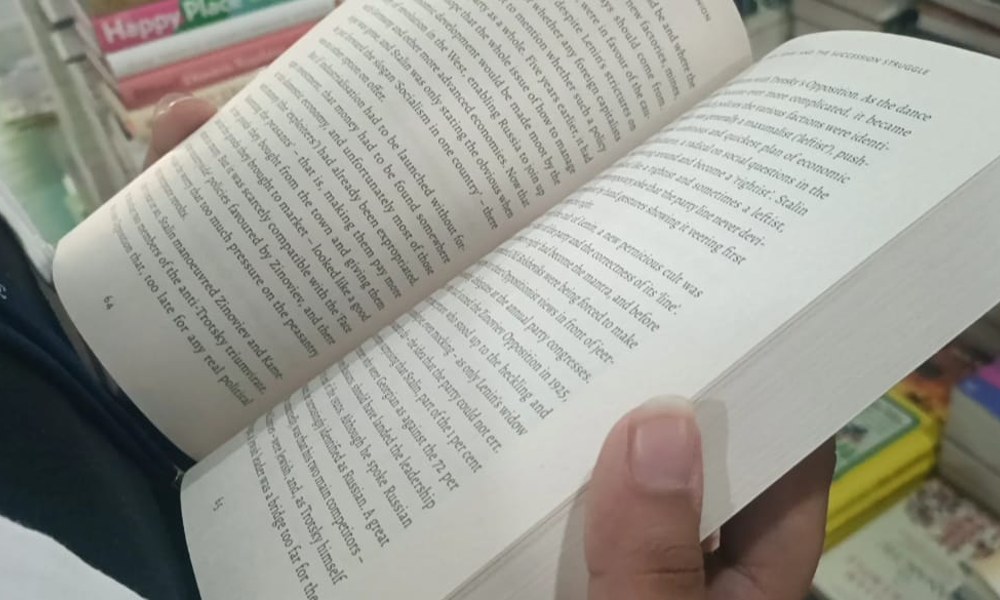Book store owners say physical copies have seen a continued rise in popularity since the pandemic.
Queen Elizabeth I, Warren Buffet, Albert Einstein, Oprah Winfrey and a bunch of girls giggling at a bookstore share a common love—for books. Even in this age of digitalization, the demand for hardcopies has only gone up. The market for physical copies of books in India is projected to generate revenue of USD 4.91 billion, according to a report by Statista. The market is also projected to grow by Compound Annual Growth Rate of 3.25 percent by 2028, and expected to reach about 0.4 billion users.
Rashmi Singh, a working professional, is a book lover who prefers print copies of books than digital copies. “There is a certain feel of having a book in your hand, and it feels more convenient to me,” she said.
Varsha, a student from St. Joseph’s college, agreed with Rashmi. She said that she prefers physical copies of books because prolonged screen time hurts her eyes. “In academics and usual life, there is way too much screen time. Having a book in hand helps me take a break from the screen time,” she said.
She added she feels joy when buying a book. “I started reading Harry Potter on my phone, but it strained my eyes, so I got the whole series on paperback. It was joyous, getting the bunch and taking it back, even though it was heavier,” she said.
Rashmi highlighted the reason for people going to print copies of book, saying that social media trends for books have made a lot of young people go back to reading and collecting physical copies of books. “For instance, I started reading books in 2022, after seeing trends amongst people for reading books. On Instagram you can find a whole community of readers to connect, and that was where I started to love reading,” she added.

However, Rashmi added that she buys digital copies when the print version is expensive for her. “I earn to help my family financially, and the prices of books are way too high at times. In such times only, I get the digital copies instead, because they are a cheaper alternative for me,” she said.
Karunakar, manager of Blossom book house, said that the overall sale has increased by around 20 percent since the COVID-19 pandemic has ended. “I see around 150 to 200 people everyday walking inside this branch of Blossom Book house and look around for books. Although only 60 to 70 might end up actually buying a book, visiting bookstores is also a hobby for a lot of young people,” he said.
Uma, manager at the Bookworm bookstore on Church Street said, “People did read digital books during the COVID pandemic but they came back to buy physical copies after 2022.”
Bookstore owners and managers agree that non-fiction printed books are the flavour of the season.
Uma said that non-fiction has been trending since last year amongst their customers. “We have been seeing young people buying more non-fiction books than the fictional ones,” she said.
According to the report by Nielsen Book Scan and World Intellectual Property Organisation (WIPO), India sold about 35.9 million books in 2022, out of which 53.5 percent were non-fiction and 15.6 percent was fiction. About 28.8 percent of sold books were children’s books.




